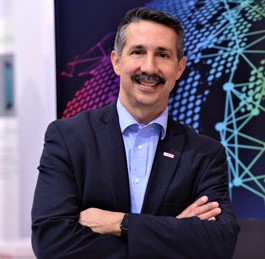Today’s cars have more than 100 million lines of software code.
To put that into perspective, just 1 million lines of code equates to nearly 18,000 printed pages, and the automated cars of tomorrow are expected to contain between 300 million and 500 million lines of code across staggeringly complex vehicle software and electrical architectures.
As vehicles become increasingly connected to drivers and their surroundings, essentially transforming them into smart devices on wheels, software and electronics play a vital role in future capabilities, functions and features. Together with cross-domain computing, they form the foundation of the “smart vehicle.”
Smart-vehicle technologies enable increased functionality, over-the-air (OTA) updates for computers and control units, security systems and software for other functions, like parking and advanced driver-assistance systems. They also allow for more customer personalization, like installing new features or activating options to optimize performance in certain driving situations.
Thanks to these trends in automation, personalization, electrification and connectivity, we’re seeing paradigm shifts not only in the importance of electrical/electronic (E/E) architectures in vehicles – especially regarding components previously untouched by software – but also in the need to think differently about E/E architecture within automobiles.
Advanced E/E architectures are the key enablers of automated driving. Most innovations and integrations moving forward will stem from software, leading to a considerable need for increased processing power and even more complex in-vehicle computers and electronic control units, as well as high-speed networking and connectivity.
At Bosch, we’ve recognized a need to shift from a domain-specific E/E architecture to one that is centralized and cross-domain. This approach means vehicles will have several incredibly powerful computers instead of numerous individual ECUs in what we call a “functional zone architecture.”
In simplest terms, this process involves migrating “motion” systems such as powertrain controls, chassis controls and driver assistance features into vehicle computers. The next layer down is what we call “functional zone ECUs,” or modular, cross-domain components placed throughout the vehicle.
 This approach will provide increased flexibility and scaling within the E/E architecture while also reducing hardware costs and complexity.
This approach will provide increased flexibility and scaling within the E/E architecture while also reducing hardware costs and complexity.
For example, a functional zone architecture could have up to 20% fewer ECUs on a car than today’s architecture without sacrificing any functionality. In fact, it actually is increasing functionality for the future.
Other benefits include improved latency and bandwidth for in-vehicle communication networks, as well as enhanced security to minimize the risk of manipulation and data misuse.
With improved E/E architectures, vehicle manufacturers can develop synergies with consumer, cloud and mobile technologies, meaning today’s automotive computers need both an evolution and a revolution to keep up with demands.
We know this type of paradigm shift is significant for the automotive industry. OEMs have recognized its importance for enabling the smart vehicles of the future and the growing megatrend of assisted and increasingly automated driving.
 Undertaking such a shift also requires a collaborative approach where OEMs and Tier 1s work together, leveraging both domain expertise and automotive software and electronics knowledge.
Undertaking such a shift also requires a collaborative approach where OEMs and Tier 1s work together, leveraging both domain expertise and automotive software and electronics knowledge.
To successfully integrate zone-based architectures, the industry needs to prioritize end-to-end expertise in areas such as communication networks, sensors and actuator technologies, vehicle computers and integration platforms, conventional ECUs and safety and security.
Tim Frasier (pictured above, left) is the regional president in North America of Bosch’s new Cross-Domain Computing Solutions division, which combines the company’s software and electronics development expertise into one integrated source.





